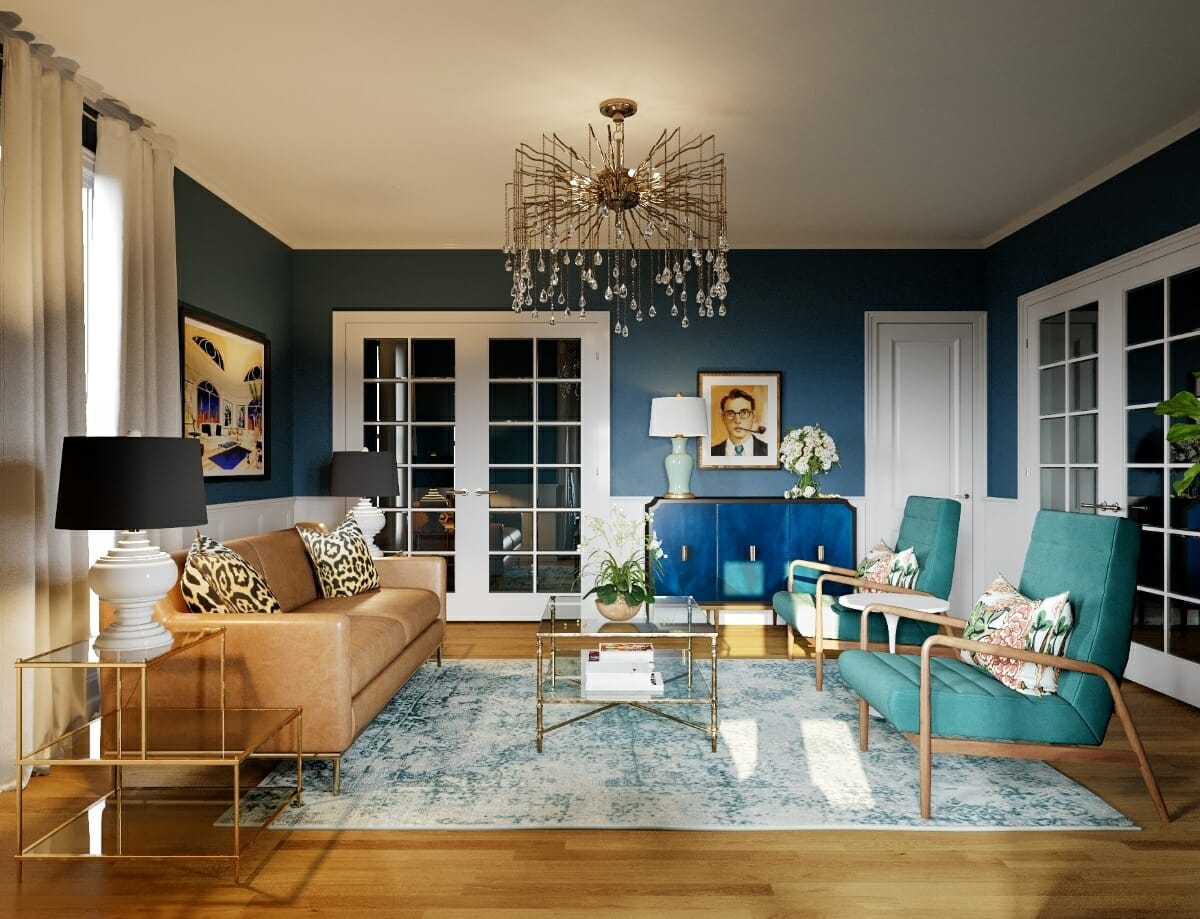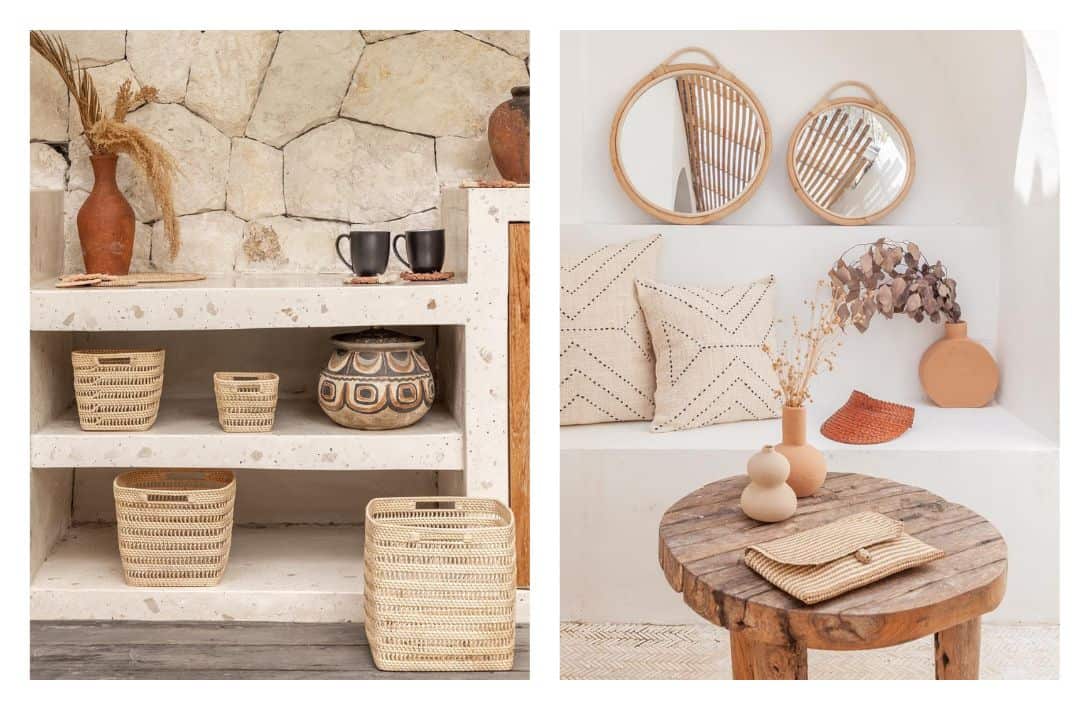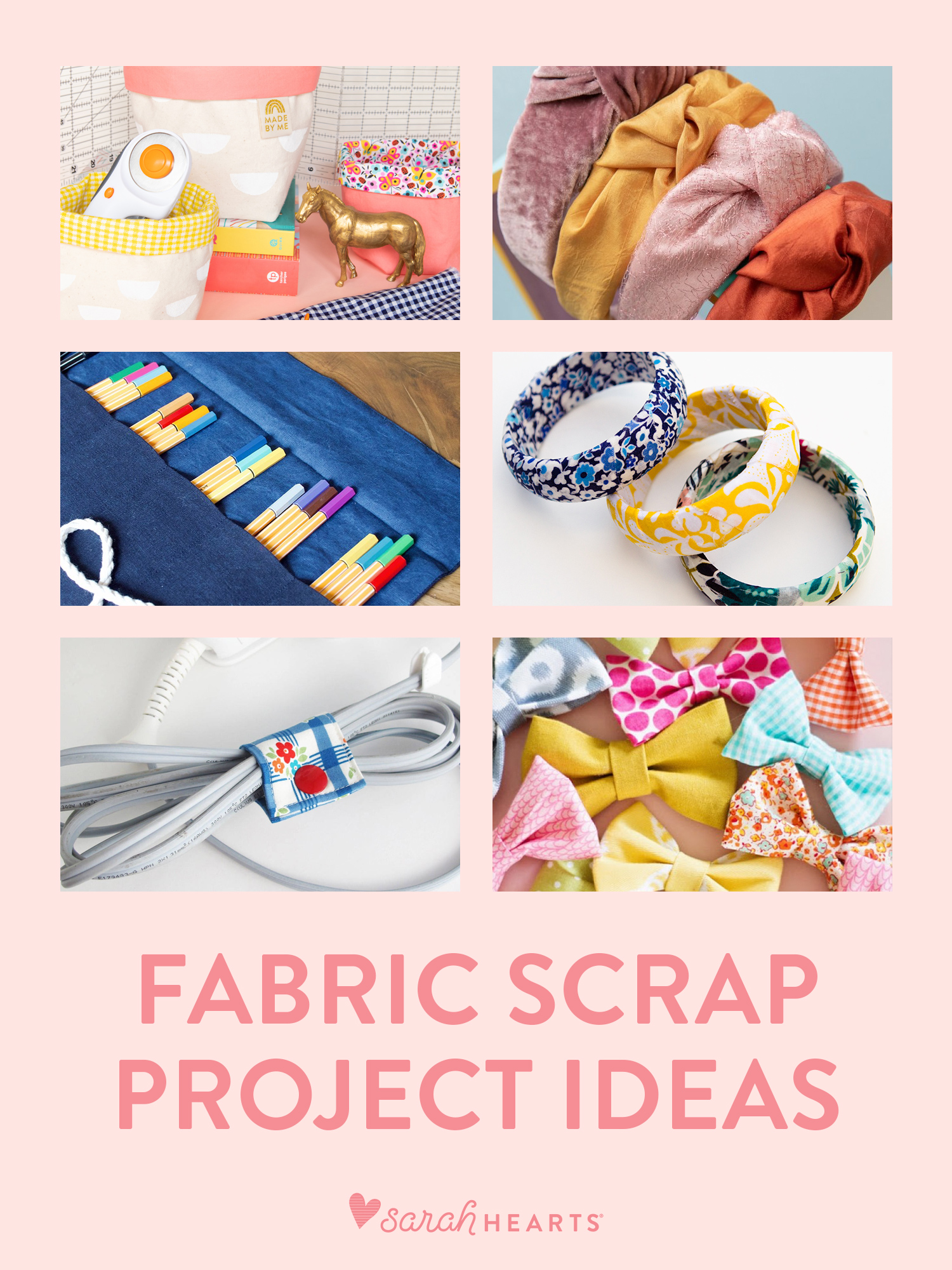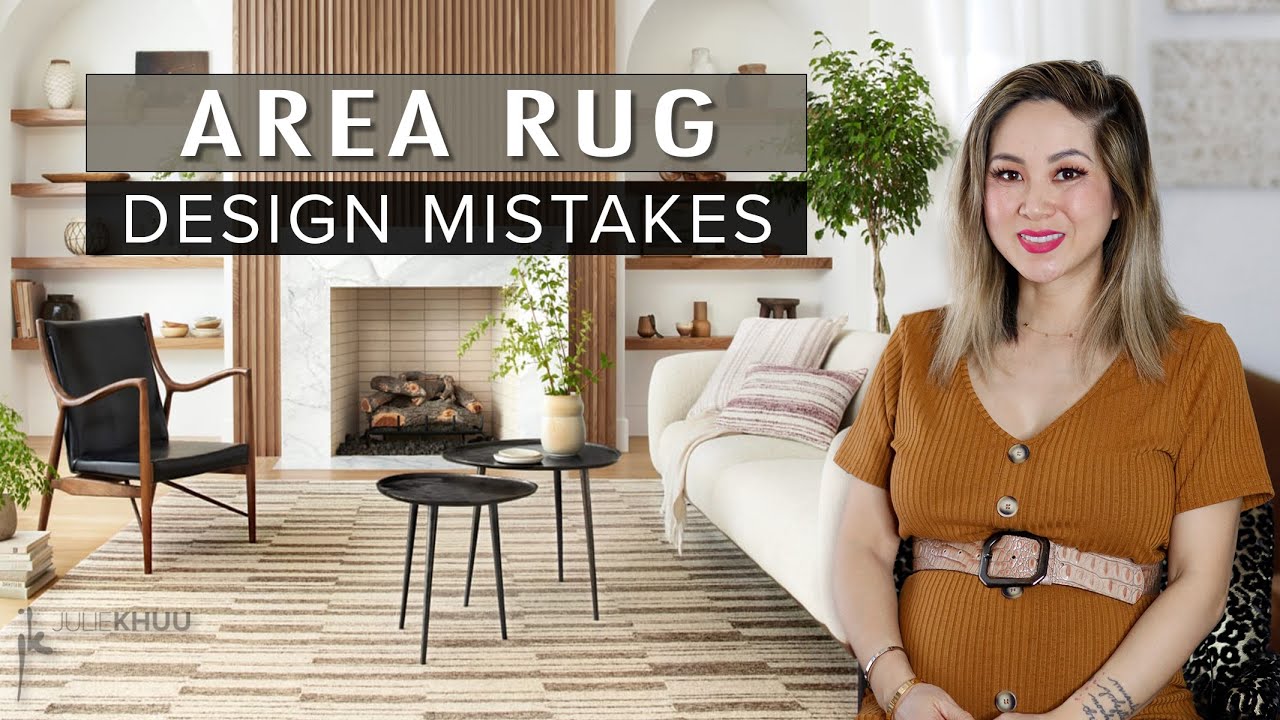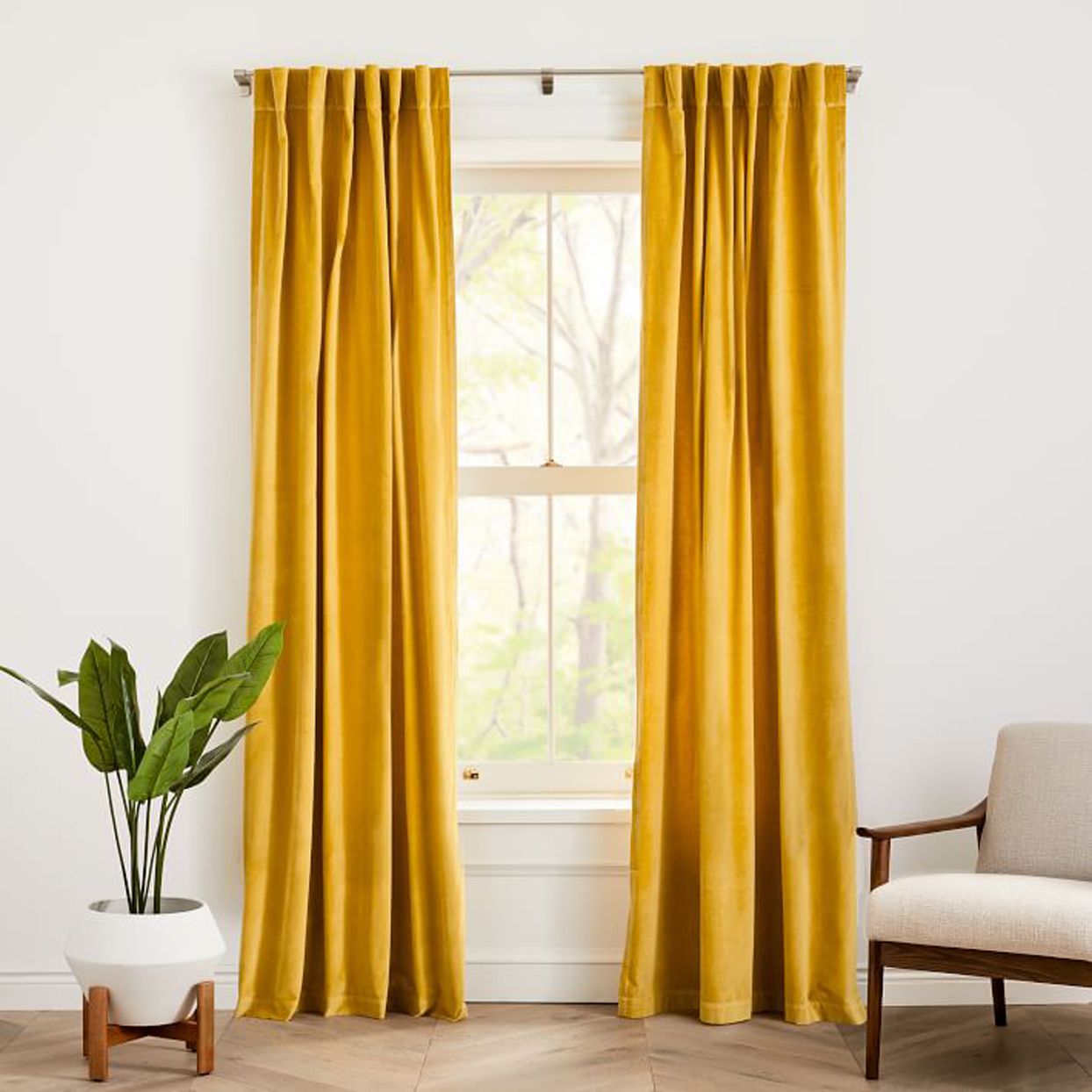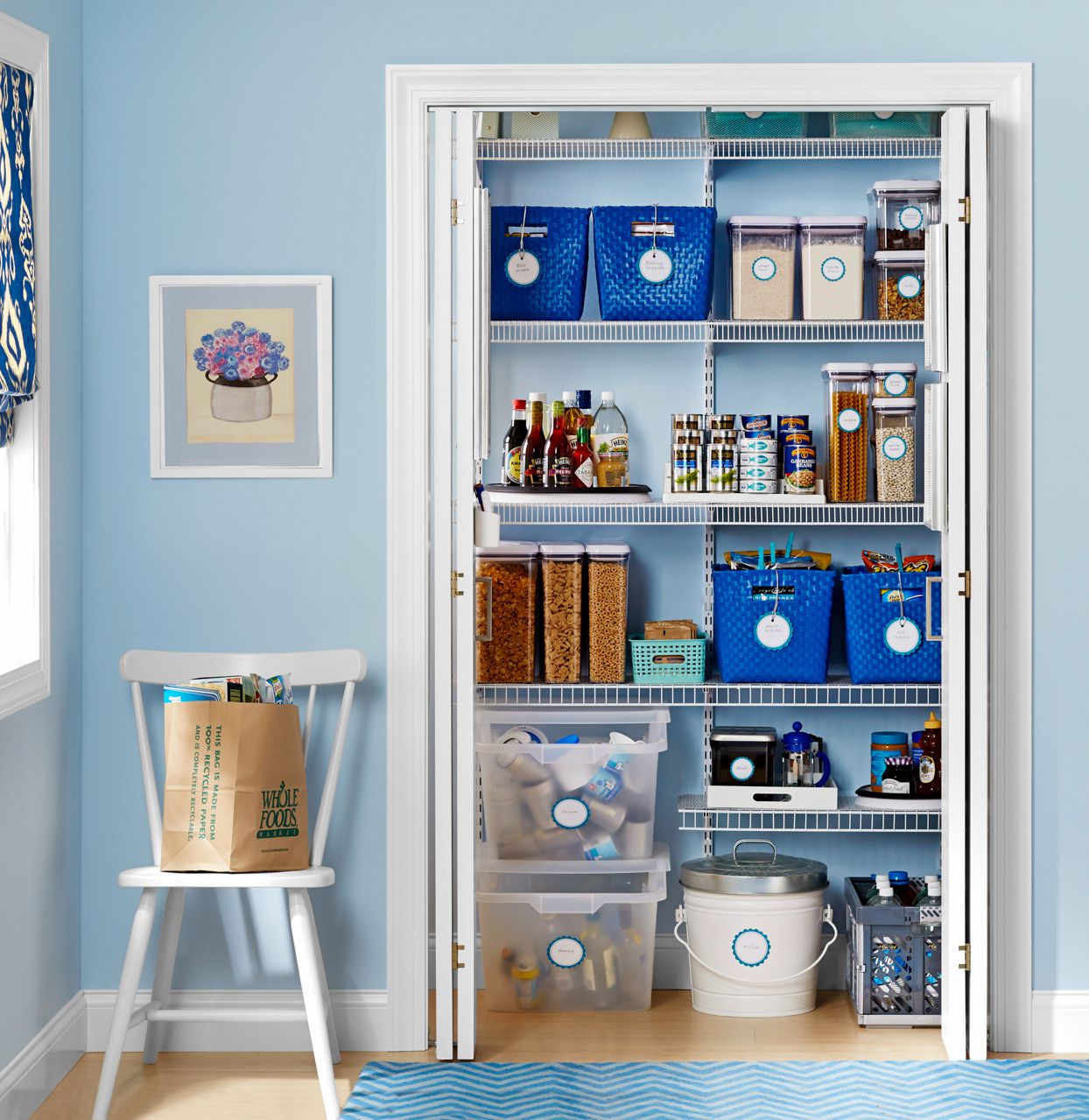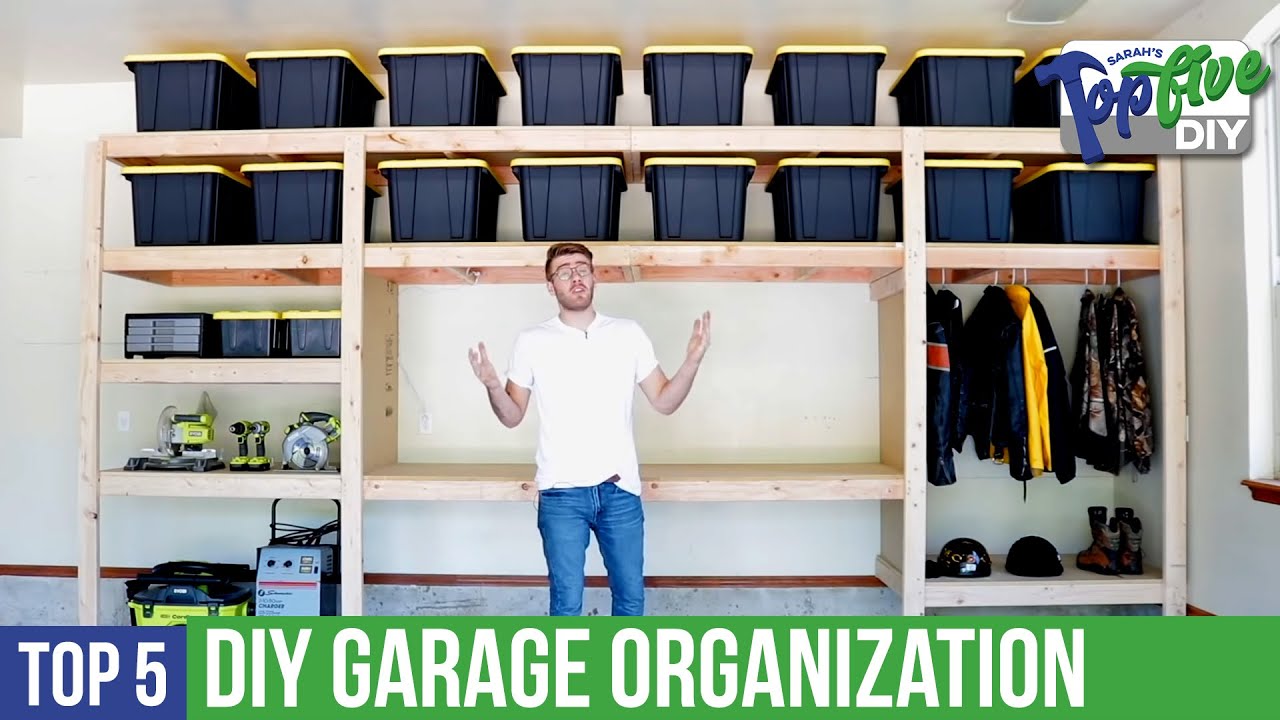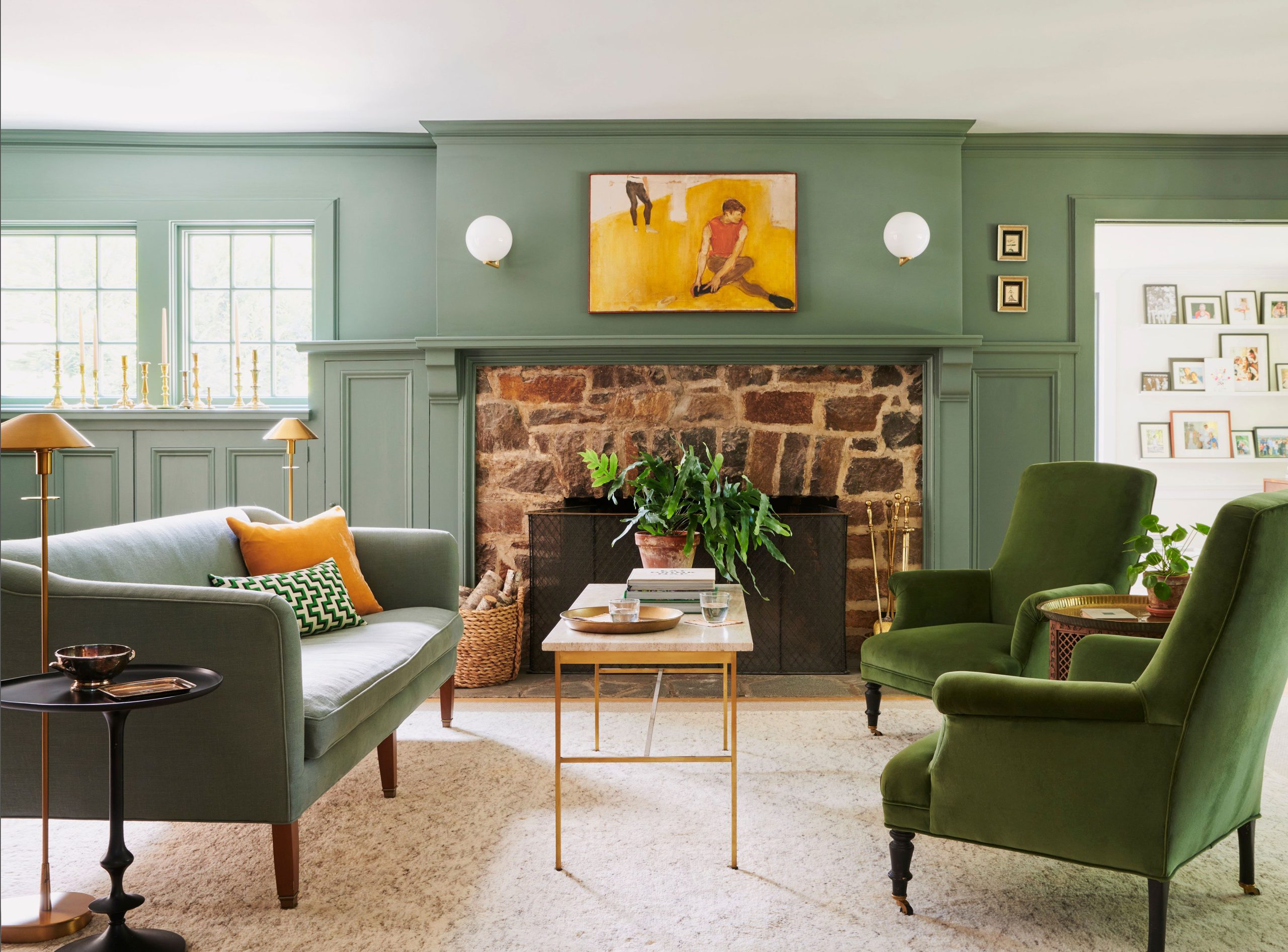
Eco-friendly home decor promotes sustainability and reduces environmental impact. Here are eight sustainable ideas for greener living.
Creating an eco-friendly home can significantly reduce your carbon footprint. Sustainable home decor choices not only benefit the planet but also enhance your living space. From using recycled materials to choosing energy-efficient appliances, there are numerous ways to make your home more environmentally friendly.
These simple yet effective changes can lead to a healthier lifestyle and a more sustainable future. Whether you’re redecorating a room or starting from scratch, incorporating green practices into your home decor can make a huge difference. Discover these eight sustainable ideas to create a stylish and eco-conscious living environment.
Recycled Materials
Decorating your home can be green and stylish. Recycled materials help save the planet. They also add unique charm to your space.
Using recycled materials reduces waste. It also cuts down on pollution. You can create a unique home decor with these ideas.
Upcycled Furniture
Upcycled furniture is both beautiful and eco-friendly. Old items get new life. You can turn old doors into tables. Or use old ladders as shelves.
Here are some upcycling ideas:
- Old chairs into planters
- Wooden crates into storage boxes
- Wine barrels into coffee tables
Upcycled furniture is also budget-friendly. You can find items at thrift stores. Or even in your attic. Get creative and make your own designs.
Reclaimed Wood
Reclaimed wood is a great choice for eco-friendly decor. It has character and history. You can use it for many projects.
Here are some ideas for reclaimed wood:
- Wall panels
- Flooring
- Picture frames
Reclaimed wood is also durable. It lasts a long time. Using it saves trees and reduces waste. Plus, it looks great in any room.
You can find reclaimed wood at salvage yards. Or look for it online. Make sure the wood is treated and safe to use.
Natural Fabrics
Natural fabrics are a great choice for eco-friendly home decor. They are sustainable, biodegradable, and often have a lower environmental impact. Let’s explore some options to make your home both stylish and green.
Organic Cotton
Organic cotton is grown without harmful pesticides or chemicals. This makes it a healthier choice for your home. It is soft, durable, and breathable. Organic cotton is perfect for bed linens, curtains, and upholstery.
- Healthier for you and the planet
- Soft and comfortable
- Durable and long-lasting
Consider switching to organic cotton for your home textiles. You will create a cozier and more sustainable living space.
Bamboo Textiles
Bamboo textiles are another excellent option. Bamboo grows quickly and requires less water. This makes it a very sustainable resource. Bamboo fabrics are soft, strong, and hypoallergenic.
- Fast-growing and sustainable
- Soft and luxurious feel
- Great for people with allergies
Bamboo textiles are ideal for towels, sheets, and blankets. They add a touch of luxury while being environmentally friendly.
| Natural Fabric | Key Benefits |
|---|---|
| Organic Cotton | Soft, durable, chemical-free |
| Bamboo Textiles | Fast-growing, hypoallergenic, soft |
Incorporating these natural fabrics can transform your home into a greener space. Make the switch today for a more sustainable lifestyle.
Energy-efficient Lighting
Choosing energy-efficient lighting is a smart way to go green. It reduces your carbon footprint and saves money on electricity bills. Here are two great options for eco-friendly lighting.
Led Bulbs
LED bulbs are an excellent choice for energy-efficient lighting. They use up to 80% less energy than traditional incandescent bulbs. LED bulbs also have a longer lifespan, lasting up to 25,000 hours. This means fewer replacements and less waste.
LED bulbs come in a variety of shapes and sizes. They can fit almost any light fixture in your home. They also produce less heat, making them safer and cooler to touch.
- Energy-efficient: Uses less energy and saves money.
- Long-lasting: Reduces waste with a longer lifespan.
- Variety: Available in many shapes and sizes.
- Cooler: Produces less heat, safer to use.
Solar-powered Lights
Solar-powered lights are another fantastic eco-friendly option. They harness the power of the sun, which is a renewable energy source. These lights charge during the day and illuminate your home at night.
Solar lights are perfect for outdoor areas like gardens, patios, and pathways. They are easy to install and require no wiring. This makes them a hassle-free solution for sustainable lighting.
| Benefits | Details |
|---|---|
| Renewable Energy | Uses solar power, reducing carbon footprint. |
| Cost-Effective | Reduces electricity bills. |
| Easy Installation | No wiring needed, simple setup. |
| Versatile | Ideal for various outdoor settings. |
Switching to energy-efficient lighting is a small step towards a greener home. It offers significant benefits for both the environment and your wallet.
Eco-friendly Paints
Choosing eco-friendly paints for your home can significantly reduce environmental impact. These paints are designed to be safer for you and the planet. Here’s a look at two types of eco-friendly paints that can help you create a greener living space.
Low-voc Paints
Low-VOC paints contain fewer volatile organic compounds. These compounds can be harmful to your health and the environment. Traditional paints release VOCs into the air, which can cause headaches and respiratory issues. Low-VOC paints are a healthier choice. They emit fewer chemicals, improving indoor air quality.
Benefits of Low-VOC Paints:
- Reduced toxic emissions
- Improved indoor air quality
- Safer for children and pets
Popular brands offering low-VOC paints include Benjamin Moore and Sherwin-Williams.
Natural Pigments
Natural pigments are derived from plants, minerals, and other natural sources. They do not contain harmful chemicals. These pigments provide vibrant and long-lasting colors. They are a perfect choice for an eco-friendly home.
Examples of Natural Pigments:
| Source | Color |
|---|---|
| Ochre | Yellow, Red |
| Charcoal | Black |
| Indigo | Blue |
Benefits of Natural Pigments:
- Non-toxic
- Biodegradable
- Rich, authentic colors
Using natural pigments supports sustainable practices. They are a beautiful and safe option for your home decor.
Indoor Plants
Indoor plants are a wonderful way to bring nature into your home. They not only add beauty but also improve air quality. Discover how indoor plants can transform your living space into a greener haven.
Air-purifying Plants
Air-purifying plants can make your home healthier. These plants remove toxins and increase oxygen levels.
Here are some popular air-purifying plants:
- Spider Plant: Easy to care for and effective at removing pollutants.
- Snake Plant: Also known as mother-in-law’s tongue, it filters harmful toxins.
- Pothos: Known for its air-cleaning properties and easy maintenance.
- Peace Lily: Removes mold spores from the air and produces beautiful flowers.
- Boston Fern: Excellent for removing formaldehyde and requires regular misting.
Vertical Gardens
Vertical gardens are perfect for small spaces. They allow you to grow plants upwards, saving floor space.
Benefits of vertical gardens include:
- Space-Saving: Ideal for apartments and small homes.
- Improved Air Quality: More plants mean better air.
- Visual Appeal: Vertical gardens add a unique and attractive element.
Some ways to create a vertical garden:
- Use a trellis and climbing plants.
- Install wall-mounted planters.
- Create a pallet garden with repurposed wood.
- Hang planters from the ceiling.
Both air-purifying plants and vertical gardens contribute to a greener, healthier home. Start incorporating these ideas today for a sustainable living space.
Sustainable Flooring
Choosing sustainable flooring is a great way to make your home eco-friendly. Eco-friendly materials reduce environmental impact and provide a stylish look. Here are two fantastic options for sustainable flooring: Bamboo and Cork.
Bamboo Flooring
Bamboo flooring is a popular choice for sustainable homes. Bamboo grows quickly, making it a renewable resource. It can be harvested without killing the plant. This is why bamboo is considered eco-friendly.
Bamboo flooring is durable and strong. It can withstand high foot traffic. It also resists moisture, making it ideal for kitchens and bathrooms. Bamboo flooring comes in many styles and colors, fitting any decor.
Here are some benefits of bamboo flooring:
- Renewable resource
- Durable and strong
- Resists moisture
- Many styles and colors
Cork Flooring
Cork flooring is another excellent eco-friendly option. Cork is harvested from the bark of cork oak trees. The trees are not cut down, and the bark regrows, making cork a renewable resource.
Cork flooring is soft and comfortable underfoot. It also provides excellent insulation, keeping your home warm. Cork is naturally resistant to mold and mildew. It also absorbs sound, making your home quieter.
Benefits of cork flooring include:
- Renewable resource
- Soft and comfortable
- Excellent insulation
- Mold and mildew resistant
- Sound absorption
Choosing sustainable flooring like bamboo or cork helps the environment. It also adds beauty and comfort to your home.
Water Conservation
Water conservation is crucial in creating an eco-friendly home. By reducing water use, you can save resources and lower your bills. Here are two effective ways to conserve water at home.
Low-flow Fixtures
Low-flow fixtures are essential for water conservation. These fixtures reduce water usage without sacrificing performance.
- Low-Flow Showerheads: These showerheads use less water while maintaining pressure. They can save up to 60% of water.
- Low-Flow Faucets: These faucets mix air with water to reduce flow. They maintain the same pressure, using less water.
- Dual-Flush Toilets: These toilets offer two flushing options. Use less water for liquid waste and more for solid waste.
Rainwater Harvesting
Rainwater harvesting captures and stores rainwater for later use. This method reduces the demand on your municipal water supply.
- Install a Rain Barrel: Place a rain barrel under your gutter downspout. Collect and store rainwater for watering plants or washing cars.
- Use a Rain Garden: Create a garden designed to absorb rainwater. It helps replenish groundwater and reduces runoff.
- Set Up a Rainwater Tank: Install a larger tank to collect more rainwater. Use this water for household chores like laundry or flushing toilets.
These water conservation methods are simple yet effective. Start implementing them to make your home more eco-friendly and sustainable.
Eco-friendly Furniture
Choosing eco-friendly furniture can make your home greener. Sustainable furniture reduces your carbon footprint. It also supports a healthier planet. Explore these ideas for sustainable furniture that enhance both style and ethics.
Sustainable Wood
Sustainable wood comes from responsibly managed forests. These forests maintain biodiversity and support local communities. Look for certifications like FSC or PEFC. These certifications guarantee the wood is sourced sustainably.
Here are some examples of sustainable wood types:
- Bamboo: Fast-growing and renewable.
- Reclaimed Wood: Old wood given a new life.
- Teak: Durable and long-lasting when sourced responsibly.
Opting for sustainable wood reduces deforestation. It also ensures the longevity of your furniture. Sustainable choices benefit both the planet and your home.
Second-hand Finds
Buying second-hand furniture is another eco-friendly option. It reduces waste and gives new life to old items. Thrift stores, online marketplaces, and garage sales offer unique finds.
Benefits of second-hand furniture:
- Reduces landfill waste.
- Saves money.
- Adds character to your home.
Here are some tips for finding great second-hand pieces:
- Check for sturdy construction.
- Look for pieces that can be easily refurbished.
- Inspect for any damage or wear.
Second-hand finds can be stylish and sustainable. They offer a blend of history and character. Embrace the charm of pre-loved furniture for a greener home.
Green Wall Art
Green Wall Art is a vibrant way to introduce eco-friendly decor into your home. It not only beautifies your space but also contributes to a healthier environment. Here are two exciting ideas to consider: Living Walls and Recycled Art.
Living Walls
Living walls, also known as vertical gardens, are walls covered with plants. They can be installed indoors or outdoors. These walls purify the air, reduce noise, and add a natural touch to your home.
To create a living wall, you need a frame, plants, and a watering system. Choose plants that suit the light conditions of your space. Some popular choices include ferns, ivy, and succulents. Living walls are a great way to bring nature inside. They are easy to maintain and look stunning.
Recycled Art
Recycled art is another fantastic green wall art idea. It involves creating art pieces from discarded materials. This not only reduces waste but also adds a unique touch to your decor.
Materials like old newspapers, plastic bottles, and metal scraps can be transformed into beautiful art. You can create wall hangings, sculptures, or even paintings. Recycled art is a fun and creative way to decorate your home sustainably.
| Type | Materials Needed | Benefits |
|---|---|---|
| Living Walls | Frame, Plants, Watering System | Purifies Air, Reduces Noise, Natural Aesthetic |
| Recycled Art | Discarded Materials (newspapers, bottles, metal scraps) | Reduces Waste, Unique Decor, Creative Expression |
Both living walls and recycled art offer unique ways to add eco-friendly decor to your home. They are beautiful, sustainable, and easy to create. Transform your walls with these green ideas and enjoy a greener living space.
:strip_icc()/Livingroom-Capture-One-Session13717-CiF-_0XRK7VA0sclpsCm2P-27fbe3d5f41d4cb49d047e345db4d00a.jpg)
Credit: www.bhg.com
Zero-waste Kitchen
Transforming your kitchen into a zero-waste zone can greatly reduce environmental impact. Small changes lead to significant reductions in waste. Here are some sustainable ideas to help create a zero-waste kitchen.
Reusable Containers
Switching to reusable containers is a key step towards a zero-waste kitchen. Ditch single-use plastic and opt for containers made of glass, stainless steel, or silicone.
- Glass jars: Perfect for storing dry goods, leftovers, and even liquids.
- Stainless steel tins: Great for packing lunches and storing snacks.
- Silicone bags: Ideal for freezing and refrigerating food items.
These containers are durable, easy to clean, and help in reducing plastic waste. Organize your pantry and fridge with these eco-friendly options.
Compost Bins
A compost bin is essential for a zero-waste kitchen. It helps in turning food scraps into valuable compost for your garden.
| Type | Benefits |
|---|---|
| Countertop Bins | Convenient for small kitchens and easy to access. |
| Outdoor Bins | Larger capacity and suitable for those with a garden. |
Using a compost bin reduces landfill waste and enriches your garden soil. Start composting and witness the positive impact on both your home and environment.
Sustainable Bedding
Transform your bedroom into an eco-friendly sanctuary with sustainable bedding. Choosing the right bedding can make a huge difference for the environment. Let’s explore some sustainable options.
Organic Sheets
Organic sheets are made from natural fibers, like cotton or bamboo. These fibers are grown without harmful pesticides and chemicals. This ensures a safer environment for farmers and consumers.
Look for certifications like GOTS (Global Organic Textile Standard) or OEKO-TEX. These certifications guarantee that the sheets meet high environmental and social standards.
Here are some benefits of organic sheets:
- Soft and comfortable
- Hypoallergenic
- Durable and long-lasting
- Eco-friendly production
Natural Dyes
Natural dyes are made from plants, minerals, and other natural sources. They are a great alternative to synthetic dyes, which can be harmful to the environment.
Using natural dyes for bedding is a sustainable choice. It reduces the use of toxic chemicals and pollutants. These dyes also offer a unique and beautiful range of colors.
Common sources of natural dyes include:
| Source | Color |
|---|---|
| Indigo | Blue |
| Turmeric | Yellow |
| Beetroot | Red |
| Walnut Hulls | Brown |
Natural dyes are not only eco-friendly but also safe for your skin. They provide a unique and rustic charm to your bedding.
Eco-friendly Cleaning
Eco-friendly cleaning is a great way to keep your home green. It ensures your living space stays clean without harming the environment. Below are some simple yet effective tips for maintaining a sustainable home.
Natural Cleaners
Natural cleaners are a great alternative to chemical-based products. They are safe for your home and the environment.
- Vinegar and Baking Soda: Mix them to clean surfaces.
- Lemon Juice: A powerful natural disinfectant.
- Essential Oils: Add a few drops for a pleasant scent.
These ingredients are effective for most cleaning tasks. You can find them in your kitchen. They are affordable and easy to use.
Reusable Cloths
Reusable cloths are an excellent choice for eco-friendly cleaning. They reduce waste and save money.
| Type | Material | Benefits |
|---|---|---|
| Microfiber Cloths | Synthetic Fibers | Highly absorbent and durable |
| Cotton Cloths | Natural Fibers | Soft and biodegradable |
Use these cloths to wipe surfaces and clean spills. Wash them after use and they are ready to use again. This simple switch makes a big difference.
Green Bathroom
Transform your bathroom into a green oasis. Small changes can make a big impact. From toiletries to towels, choose eco-friendly options. This helps reduce waste and conserve resources.
Eco-friendly Toiletries
Switch to eco-friendly toiletries to reduce plastic waste. Use products with natural ingredients. They are gentler on your skin and the environment.
- Bamboo toothbrushes: Biodegradable and sustainable.
- Organic soaps: Free from harmful chemicals.
- Refillable containers: Reduce plastic waste.
Many brands offer eco-friendly options. Look for those with minimal packaging. This helps reduce your carbon footprint.
Biodegradable Towels
Choose biodegradable towels for a greener bathroom. They break down naturally, reducing landfill waste. Look for towels made from organic cotton or bamboo.
| Material | Benefits |
|---|---|
| Organic Cotton | Soft and absorbent, chemical-free. |
| Bamboo | Antibacterial, fast-drying, and eco-friendly. |
These materials are sustainable and gentle on the skin. They also last longer, saving you money in the long run.
Efficient Heating
Efficient heating is key to an eco-friendly home. It reduces energy use and lowers your bills. Small changes can make a big difference. Here are some tips to keep your home warm and green.
Smart Thermostats
Smart thermostats are essential for efficient heating. They learn your schedule and adjust the temperature. This means your home is warm when you need it. And cool when you don’t. This reduces energy waste and saves money. Popular brands include Nest and Ecobee.
Here are some benefits of smart thermostats:
- Energy savings: Reduce your heating costs.
- Convenience: Control from your phone.
- Customization: Set different temperatures for each room.
Insulation Tips
Good insulation keeps heat inside your home. It reduces the need for constant heating. Proper insulation saves energy and money. Here are some simple tips to improve your home’s insulation:
- Seal gaps: Check doors and windows for drafts.
- Add insulation: Use foam or fiberglass in walls and attics.
- Insulate pipes: Prevent heat loss in water pipes.
Use these tips to maintain a warm, energy-efficient home. Efficient heating helps the planet and your wallet.
Minimalist Design
Embracing a minimalist design in your home can lead to a more peaceful and organized living space. It also aligns with eco-friendly values by reducing waste and promoting sustainability. Let’s explore some effective strategies and sustainable choices for a minimalist home decor.
Decluttering Tips
Minimalism starts with decluttering. Here are some practical tips to help you get started:
- Sort and categorize: Group similar items together.
- Keep essentials: Only retain items you truly need.
- Donate or recycle: Give away items in good condition. Recycle what you can’t donate.
- Use storage wisely: Invest in multi-functional furniture with built-in storage.
Decluttering your home can create more space and reduce stress. It also contributes to a cleaner environment by promoting recycling and reducing waste.
Sustainable Choices
After decluttering, focus on making sustainable choices for your home decor:
- Choose natural materials: Opt for furniture made from bamboo, reclaimed wood, or recycled metal.
- Eco-friendly textiles: Use organic cotton, linen, or hemp for curtains, rugs, and upholstery.
- Energy-efficient lighting: Install LED bulbs to reduce energy consumption.
- Second-hand treasures: Visit thrift stores for unique, pre-loved decor items.
Making sustainable choices in your home decor not only benefits the environment but also creates a healthier living space for you and your family.
| Material | Eco-Friendly Option |
|---|---|
| Furniture | Bamboo, reclaimed wood, recycled metal |
| Textiles | Organic cotton, linen, hemp |
| Lighting | LED bulbs |
A minimalist design with sustainable choices can transform your home into a serene, eco-friendly sanctuary.

Credit: www.housebeautiful.com
Renewable Energy
Embracing renewable energy is a key step in creating an eco-friendly home. This not only reduces your carbon footprint but also cuts down on energy costs. Here are two effective ways to integrate renewable energy into your home decor:
Solar Panels
Solar panels are a fantastic way to harness the sun’s energy. They convert sunlight into electricity, providing a clean energy source. Installing solar panels on your roof can significantly reduce your electricity bills. Additionally, they add a modern and sleek look to your home.
- Reduce carbon emissions
- Lower electricity bills
- Modernize your home exterior
Consider placing the panels on the south-facing side of your roof. This maximizes exposure to sunlight. You can also integrate them into your garden or patio structures.
Wind Turbines
Wind turbines are another excellent renewable energy source. They convert wind energy into electricity. Small wind turbines are perfect for residential use.
| Feature | Benefit |
|---|---|
| Eco-Friendly | Reduces reliance on fossil fuels |
| Cost-Effective | Decreases energy bills over time |
| Compact Design | Fits well in small spaces |
Install a small wind turbine in your backyard or on your roof. Ensure it is placed in an area with consistent wind flow. These turbines come in various designs to match your home aesthetic.
Natural Decor
Natural decor brings nature’s beauty indoors. It enhances your home with eco-friendly materials. This approach reduces waste and supports sustainable living. Let’s explore how to incorporate natural elements into your home.
Wood Accents
Wood accents add warmth and charm to your home. They are versatile and timeless. Choose reclaimed wood for a rustic look. This wood comes from old barns, factories, and ships. It’s a sustainable choice and adds character.
You can use wood in various ways:
- Wooden shelves for books and plants.
- Handcrafted wooden furniture like tables and chairs.
- Wooden wall art and picture frames.
- Wooden bowls and kitchenware.
Look for FSC-certified wood. This ensures the wood comes from responsibly managed forests. Bamboo is another excellent option. It grows quickly and is highly renewable. Bamboo furniture and decor are durable and stylish.
Stone Elements
Stone elements bring a natural and elegant feel to your home. They are durable and timeless. Natural stone can be used in many ways:
- Stone countertops in the kitchen and bathroom.
- Stone tiles for flooring and walls.
- Stone sculptures and decor pieces.
- Garden paths made with natural stones.
Granite, marble, and slate are popular choices. Each stone has unique patterns and colors. Choose locally sourced stones to reduce the carbon footprint. Polished stones can add a touch of luxury to any room.
Combine stone with other natural materials. Pairing stone with wood creates a balanced and harmonious look. This combination enhances the natural aesthetic of your home.
Eco-friendly Nursery
Creating an eco-friendly nursery ensures a safe environment for your baby. Sustainable choices are better for your child’s health and the planet. Here are some tips to make your nursery greener.
Non-toxic Toys
Non-toxic toys are essential for a safe nursery. Choose toys made from natural materials like wood or organic cotton. Avoid toys with harmful chemicals or synthetic materials.
- Wooden blocks
- Organic cotton stuffed animals
- Natural rubber teethers
These options ensure your baby plays safely. They also reduce plastic waste.
Organic Bedding
Organic bedding is crucial for a healthy sleep environment. It is free from pesticides and chemicals. Choose bedding made from organic cotton or bamboo.
| Item | Material |
|---|---|
| Crib Sheets | Organic Cotton |
| Blankets | Bamboo |
| Mattress Pads | Hemp |
Organic bedding is softer and safer for your baby. It also reduces exposure to allergens.
Outdoor Spaces
Transforming your outdoor spaces into eco-friendly havens is both rewarding and impactful. You can make your garden, patio, or balcony sustainable with simple changes. Let’s explore some eco-friendly ideas for greener living.
Sustainable Gardens
Creating a sustainable garden starts with choosing native plants. Native plants require less water and care. They are also better for local wildlife. Add a compost bin to recycle organic waste. Composting reduces waste and improves soil quality.
Use rain barrels to collect rainwater. This reduces the need for tap water and conserves resources. Consider planting a vegetable garden. Growing your own food reduces carbon footprints and promotes healthy eating.
| Tip | Benefit |
|---|---|
| Choose native plants | Less water, better for local wildlife |
| Add a compost bin | Reduces waste, improves soil quality |
| Use rain barrels | Conserves water |
| Plant a vegetable garden | Reduces carbon footprint, promotes healthy eating |
Opt for recycled or upcycled furniture for your outdoor space. This reduces waste and gives materials a new life. Look for furniture made from sustainable wood. Bamboo and reclaimed wood are excellent choices.
Consider solar-powered outdoor lights. They are energy-efficient and reduce electricity use. Choose organic cushions and fabrics for comfort. These materials are free from harmful chemicals.
- Recycled or upcycled furniture reduces waste.
- Sustainable wood options include bamboo and reclaimed wood.
- Solar-powered outdoor lights are energy-efficient.
- Organic cushions and fabrics are chemical-free.
Adding these elements to your outdoor space creates a beautiful, eco-friendly haven. Small changes can make a big impact on the environment.

Credit: www.housebeautiful.com
Frequently Asked Questions
What Are Eco-friendly Home Decor Ideas?
Eco-friendly decor includes recycled materials, organic fabrics, and energy-efficient lighting.
How To Make Home Decor Sustainable?
Use renewable resources, upcycle old items, and choose eco-friendly materials.
Why Choose Sustainable Home Decor?
It reduces environmental impact and promotes a healthier living space.
What Is Upcycled Home Decor?
Upcycled decor involves repurposing old items into new, functional pieces.
How To Find Eco-friendly Furniture?
Look for FSC-certified wood, reclaimed materials, and non-toxic finishes.
What Are Organic Fabrics In Home Decor?
Organic fabrics are made from natural fibers without harmful chemicals.
How To Reduce Waste With Home Decor?
Use durable items, avoid single-use products, and recycle.
Where To Buy Sustainable Home Decor?
Check eco-friendly stores, online marketplaces, and local artisans.
What Is Energy-efficient Lighting?
Energy-efficient lighting uses less energy, like LED bulbs, reducing electricity consumption.
How To Create A Green Living Space?
Incorporate plants, use natural light, and select sustainable materials.
Conclusion
Embracing eco-friendly home decor can significantly reduce your carbon footprint. These sustainable ideas are easy to implement. Start small and gradually make greener choices. Your home will not only look beautiful but also contribute to a healthier planet. Let’s work together for a sustainable future by making mindful decor decisions.





